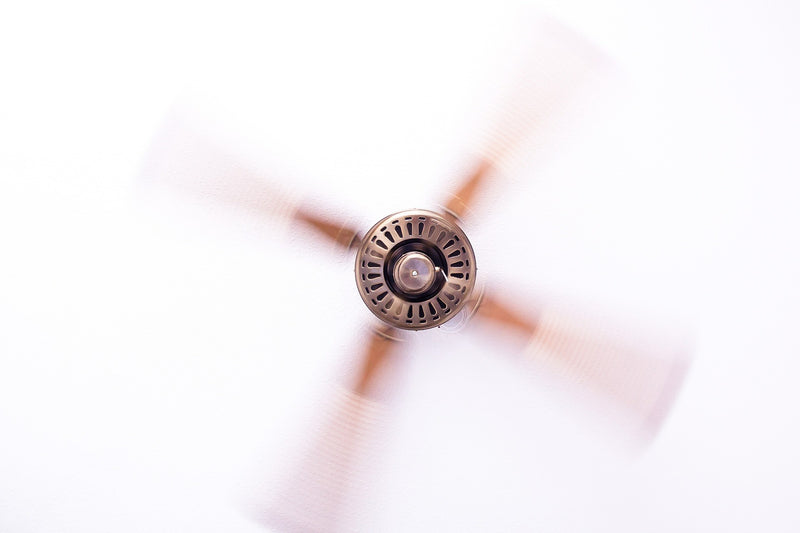Natural Remedies for Hot Flushes: which is best for me?

Natural remedies for hot flushes: which is best for me?
The hot flush. The unpredictable, unpleasant, unnerving hot flush. As we women approach a certain age, we begin to dread their arrival more and more. Of course, there are now many treatments and solutions available, from HRT (hormone replacement therapy) and prescription medication to cognitive therapies and lifestyle changes. But the next question we are faced with is, how do I know which one is the right one for me? Does it have to be HRT?
The short answer is, no. HRT may be a popular method to combat hot flushes and other symptoms of the menopause that is used by many women, but it certainly isn't the only option, nor is it always an effective solution for every woman who tries it. And before jumping into HRT and other pharmacological solutions, you can always try to gain better control of your hot flushes through lifestyle changes, cognitive methods and natural alternatives. Read on as we break down alternative remedies for hot flushes, so when the time comes, you can make a more informed decision on how you'll keep the menopausal hot flushes at bay.
Natural remedies
You may have heard or read about natural remedies for hot flushes such as sage, black cohosh, red clover, soy, evening primrose oil, ginseng, and others, many of which are available over the counter. Each has its own claim to fame; red clover and soy, for example, contain phytoestrogens, a substance that acts like oestrogen when ingested. However, the majority of these plant-based remedies have not been clinically tested to a standard which would allow them to be medically recommended. Some women may have used these natural alternatives and found them beneficial, but there is little or no scientific proof that they help reduce hot flushes, and their side effects (including how they interact with other medications) have not been conclusively identified either.[1]
One exception that has been clinically tested as a herbal remedy for hot flushes is sage. Sage has traditionally been taken as a remedy for hot flushes and sweating, and as a general tonic to ease menopausal symptoms. In 2011, a multicenter clinical trial conducted in Switzerland found that a once-daily tablet of fresh sage leaves resulted in a significant reduction of the average number of hot flushes experienced daily. By the 8th week of the trial, the 71 women who participated saw a decrease of mild, moderate, severe, and very severe flushes by 46%, 62%, 79%, and 100% respectively, and no side effects were recorded.[2]
Aromatherapy, which uses essential oils to reduce anxiety and promote relaxation, is another natural alternative to consider when trying to ease stressful menopausal symptoms such as hot flushes and night sweats. A 2012 clinical trial of 100 women, the inhalation of lavender essential oil for 20 minutes, twice a week for 12 weeks, was shown to reduce the frequency of hot flushes by 50% and improve quality of sleep.[3] Lavender essential oil has long been used to aid sleep, and studies have shown it to be beneficial in reducing stress and depression.
Cognitive behavioural therapy (CBT)
The use of cognitive behavioural therapy (CBT) to treat menopause symptoms is arguably one of the best ways to combat hot flushes. CBT is a talking therapy centred on changing your thinking and behaviour patterns to help manage issues such as anxiety, depression, and other mental and physical health concerns.[4] Tailored specifically to target menopausal symptoms, three clinical trials have found CBT to be an effective method for women going through the menopause to manage hot flushes and night sweats. CBT for the menopause is a 4-6 week course that focuses on stress and wellbeing, hot flushes, night sweats and sleep problems, and has been shown to maintain its effects even six months later with further benefits to qualify of life. It can be done in small groups or with a self-help book and some guidance from a primary care health professional like your GP or counsellor.[5]
Clinical hypnosis
Another scientifically proven method of reducing the frequency and intensity of hot flushes is clinical hypnosis. Hypnosis takes a holistic approach that involves a deeply relaxed state of focused attention, individualized mental imagery, and suggestion, and has been shown to reduce the frequency of hot flushes by over 74% and their intensity by over 80%.[6] Hypnosis has been recommended by many professional bodies such as the North American Menopause Society, and others, due to its proven efficacy and minimal risk factors.[7] You can speak to your GP about the specific kind of hypnosis that would work best for you and how you can proceed with the treatment.
Lifestyle changes
Lifestyle changes are probably the first factor that even medical professionals would suggest when it comes to getting menopausal symptoms such as hot flushes under control. The basics: cutting down your intake of alcohol, caffeine, and overly-spicy food, maintaining a healthy weight and a clean, balanced diet, and giving up smoking. You may also find that taking up a regular exercise routine and mindfulness practices will help you keep your serotonin levels up, improving your mood and your sleep patterns and thus reducing your hot flush symptoms.
Clothing and environment
Often, hot flushes can be brought on by or aggravated by factors such as your environment and clothing. Heavy clothing like jumpers and heavy knits can sometime cause your body to overheat, and some synthetic fabrics which lack breathable qualities may leave your skin feeling irritated and uncomfortably sweaty. Choosing clothes that are more adaptable and breathable will help you stay comfortable; with advances in technology, products such as Become’s range of cooling clothing with Anti-Flush Technology™ can go a long way in easing the intensity of your hot flushes. Environments like hot or stuffy rooms can also trigger or aggravate hot flushes. Keep your spaces cool and airy, and invest in a handheld fan to have with you when the heat strikes. Your bedding is another key environment to consider when it comes to night sweats, hot flushes that happen while you're sleeping.
Of course, even after making all the changes recommended by medical professionals, family, and friends (and us, too), you may find that the flushes are never quite gone for good. It will be a process of trial and error to find the best solutions for you, but the key is to stay strong and stay hydrated, and try not to let the heat get the best of you.
To find out more about how to beat the hot flush heat, check out our tips for keeping cool during hot flushes. You can also explore our Meno Guide to discover more advice and get the support you need to take on the ups and downs of the menopause.
[1] https://www.menopause.org.au/hp/information-sheets/734-complementary-and-herbal-therapies-for-hot-flushes
[2] https://doi.org/10.1007/s12325-011-0027-z
[3]https://www.ncbi.nlm.nih.gov/pmc/articles/PMC3159017/
[4] https://www.nhs.uk/conditions/cognitive-behavioural-therapy-cbt/
[5] https://thebms.org.uk/publications/tools-for-clinicians/cognitive-behaviour-therapy-cbt-menopausal-symptoms/
[6]https://www.ncbi.nlm.nih.gov/pmc/articles/PMC3556367/
[7]https://www.ncbi.nlm.nih.gov/pmc/articles/PMC6419242/
More Posts
-
Become Wins an Opra...
We’re beyond thrilled to share that Become has been honored with an Oprah Daily Menopause O-ward ! This recognition highlights our commitment to pr...
Read More -
Tips for a Calmer, ...
The festive season is a time for joy and connection, but it can also disrupt routines and feel overwhelming, particularly during (peri)menopause. ...
Read More -
Managing Hot Flashe...
This article was contributed by Maryon Stewart BEM, widely recognized as a pioneer of the "Natural Menopause Movement." Maryon empowers women to na...
Read More







Comments
2 Comments
-

Posted by GbUusLQT | June 22, 2020
-

Posted by ejPVBixDphS | June 22, 2020
Leave a CommentwopCjdeAqkfW
zcdNWAZmL